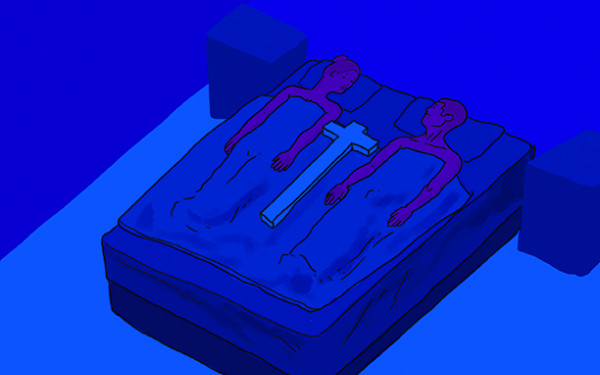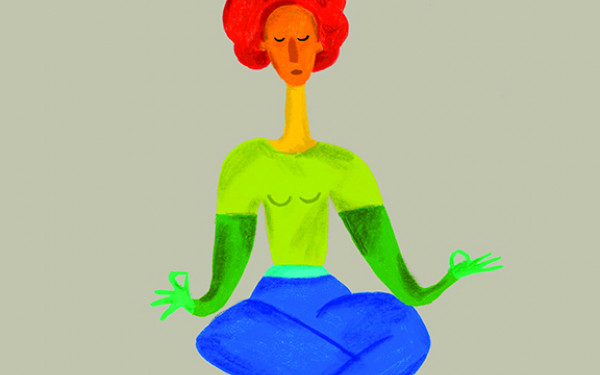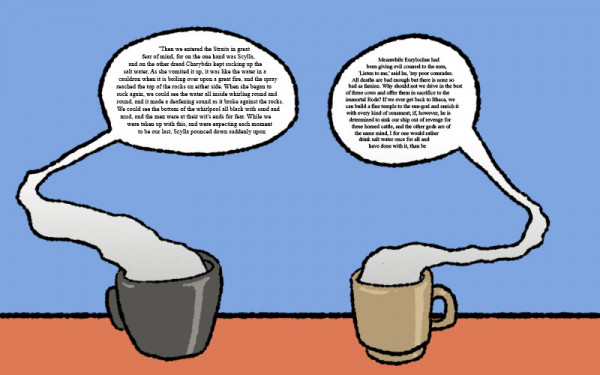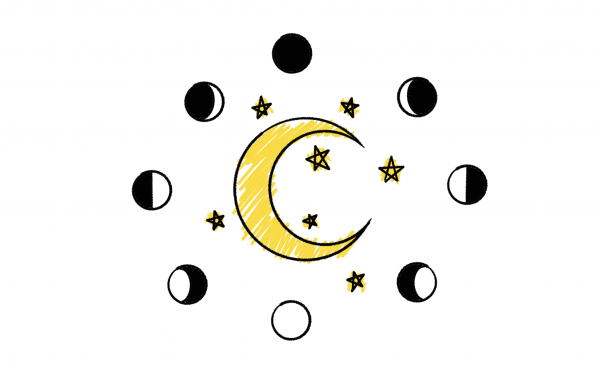Beyond the label of ‘alternative health’
How practitioners outside of Western biomedicine connect with healing practices
Content warning: Mentions of colonial violence and medical violence.
Mélissa Élias, a Montreal-based osteopath, has grappled with the term “alternative medicine” throughout her career—a label she feels misrepresents the essence of her work.
“The word alternative is not one I would use. Sometimes [osteopathy] is an alternative medicine because conventional medicine isn’t responding to someone's needs. Oftentimes, it’s more so complementary,” Élias said. “You really need to work with both types of medicine to heal the problem.”
Alternative medicine, a term used interchangeably with traditional medicine, holistic health and, to some degree, wellness, evades a precise definition.
According to the U.S. National Center for Complementary and Integrative Health, alternative medicine can refer to a wide variety of medical philosophies. These can include Traditional Chinese Medicine and Ayurveda, as well as a broad set of practices, including homeopathy, naturopathy, acupuncture, reiki and meditation. Broadly speaking, alternative medicine refers to health-seeking practices that fall outside of biomedicine.
For Élias, her work is one of many practices often grouped under these broad terms. Rooted in manual therapy, osteopathy focuses on assessing and treating the body as a whole, rather than targeting isolated symptoms. Trained in osteopathy, kinesiology and pilates, Élias’s independent practice serves her neighbourhood community, with a specialization in perinatal care.
This approach stands in contrast to biomedicine, the foundation of mainstream healthcare in the Western world. Also known as allopathic healthcare, the Institute of Biomedical Science describes biomedicine as the practice of treating specific diseases with federally regulated procedures like pharmaceuticals, surgeries and therapies.
“Alternative medicine recoups everything that is not included in [biomedicine], although there are no hard lines that truly distinguish the two,” said Megan Blanche, a Montreal-based mental health counsellor. They added that the boundaries between the two are in constant flux and are not always clear.
This shifting relationship between alternative and conventional medicine mirrors its growing presence in the mainstream. According to the Global Wellness Institute, global wellness spending—which includes traditional medicines, exercise and personal care—totalled US$6.3 trillion in 2023.
Just as alternative medicine has entered the mainstream, so have its critiques: cultural appropriation, questionable scientific methods, unfettered consumerism and, most poignantly, Goop-y pseudoscience.
While alternative medicine is fraught with the aforementioned problems, Élias and Blanche both pointed to the nuance in the attraction towards alternative medicine. They believe that it goes beyond the assumption that its users are uneducated, misinformed or simply anti-science.
Emery Wright, of Georgia, USA-based grassroots organization Project South, states on Dr. Kimberlé Crenshaw’s podcast, “We are living in a public health system that is not designed to ensure public health.”
Wright’s sentiment, expressing the healthcare inequities that emerged during the COVID-19 pandemic, is a long-held one by decolonial and feminist activists and scholars. Such inequities exist at all stages of health-seeking behaviours, from the long-term harms of everyday pollution in underserved communities to the impossible wait times for accessible treatment.
Dr. Catherine Kineweskwêw Richardson, Concordia University’s Research Chair in Indigenous Healing Knowledges and mental health counsellor, highlights the longstanding colonial roots of Western biomedical practice, with a particular emphasis on psychoanalysis.
“In the 1800s, Sigmund Freud and his colleagues, mostly men, were developing psychological theories at the same time as when European powers were setting up slavery, stealing and imposing their European ways [abroad],” Dr. Richardson said.
She further explained that during this period, resistance movements among Indigenous peoples emerged across the Caribbean, Australia, Turtle Island and Africa. However, these acts of resistance were largely absent from the psychological writings of the time.
“Psychology and psychiatry take our acts of resistance, and they say, ‘Oh, those are symptoms of illness,’” Dr. Richardson concluded.
Dr. Richardson’s critique of biomedicine’s colonial history is inextricable from biomedicine’s present.
“A lot of care workers are trying their best, and they truly believe that they’re doing the right thing,” Blanche said. They added that despite good intentions, healthcare training can instill a complex of saviourism towards those in their care, often only treating patients at the expense of their dignity.
Even for those to whom medical care is entirely physically and financially accessible, studies show that biomedicine has been ineffective for many in addressing mental health and chronic conditions. This is due, in part, to biomedicine’s focus on curing symptoms, otherwise known as a fragmentation of care.
Blanche explained that this fragmentation can not only bring harm to patients, but to healthcare workers as well. Blanche noted that through their work, they have noticed the significant pressure medical professionals, counsellors and psychologists place on themselves.
“Healthcare professionals and care workers feel like they have to save people from themselves,” Blanche said.
Nevertheless, advancements in biomedical science have improved the quality of care worldwide, especially regarding reducing child mortality, treating viral and infectious diseases, and developing life-saving biotechnology. However, Dr. Richardson believes these successes do not absolve biomedicine from critique.
Critiquing biomedicine in a contemporary era comes at a tense moment of medical misinformation and distrust towards scientific institutions. Yet Blanche said that uncritically doubling down on our faith in biomedicine as a response to misinformation does not improve biomedicine’s efficacy or quality of care. Rather, they added, it can polarize those who have experienced violence at the hands of the mainstream medical system.
Dr. Richardson suggested that the growing interest in new forms of care can be attributed to unique contemporary challenges people are facing.
“The planet is changing and the needs for our planetary survival are changing. We need to have different ways of thinking,” Dr. Richardson proposed. “I think [wellness] can help in understanding that we have a connection to other worlds, to our ancestors, to the spirit world and to the knowledges that were destroyed through colonization.”
Further, part of the draw to alternative medicine is to fill the gaps left by biomedical encounters.
“Often, I’m the last call to support those who want to address their pain,” Élias said, adding that her patients value her non-judgemental and understanding approach. “It allows them to express how they really feel. There isn’t always space for that in everyday life.”
When the biomedical encounter often leaves the patient feeling ignored, decontextualized or hurt, alternative medicine’s holistic approach is naturally appealing.
“There is an immense amount of violence and coercion in our systems of care that is continuously justified and excused by the practitioner’s own beliefs,” Blanche said, later pointing out the tendency in mainstream healthcare that both strips agency from those deemed “mad” yet argues that well-being should responsibilized at the individual level.
Non-Western health practices like Ayurveda or the Indigenous Medicine Wheel contain rich histories, continuously evolving scientific philosophies, and their own systems of knowledge production, accreditation and treatment. In dismissing all forms of alternative medicine as inherently illegitimate, a hierarchy of knowledge is instilled, reinforcing Western ways of knowing as superior and unquestionable.
Blanche’s work reflects this.
“Mainstream medicine usually reflects dominant ways of thinking about life, the body and health that are shared by those who have the privilege to produce knowledge that’s considered legitimate,” Blanche said.
Rather than calling for an unwavering commitment to either biomedicine or alternative medicine, Élias proposes a middle ground—a collaborative form of integrative healthcare—allowing for an exploration of medicines that may be more accessible, culturally informed or just satisfy curiosity.
“Osteopathy can’t heal everything,” Élias said. “[Healthcare] would benefit from less conflict between clinics. […] It’s most important for us to work in collaboration towards the well-being of the patient.”
Élias added that working with the differences between disciplines could lead to more comprehensive care.
However, access is a key obstacle to integrative care. Beyond the general inaccessibility of finding a family doctor, most alternative therapies are not covered by insurance, requiring those seeking care to pay out of pocket.
For students, university insurance seldom covers much beyond emergency care and prescription medication. If hospital services and prescription medication are the only services in student insurance that don’t require a high co-pay, it reinforces the notion that healthcare should only be truly accessible in the event of pain deemed measurably “serious enough” by a healthcare provider.
Accessibility is similarly valued by practitioners.
“We would benefit from lower treatment costs to patients,” Élias said. “There are already social acupuncture clinics, where treatments are much cheaper. Socialized osteopathy isn’t very common, so I believe we [as osteopaths] would benefit further from an accessibility of care.”
Dr. Richardson’s work with the Indigenous Healing Knowledges project is guided by a commitment to adapting the meaning of health and care to meet the needs of all, particularly for those who have had their dignity disregarded by biomedical theory and encounter.
“I think the principle of dignity is at the centre of human well-being, [yet] it is violated in so many ways on a daily basis,” she said, adding that alternative forms of care can be one of the many ways one can go about repairing or asserting dignity in ways both big and small.
These assertions of dignity are, in part, representative of the draw towards alternative forms of medicine and care. Dr. Richardson’s work with the Indigenous Healing Knowledges project is but one of many manifestations of alternative medicine driven by principles of collective care.
“Health goes so far beyond biomedicine,” Blanche said. “There is an important place that can be made for a more holistic vision of what health and wellbeing mean for everyone.”


_600_832_s.png)




